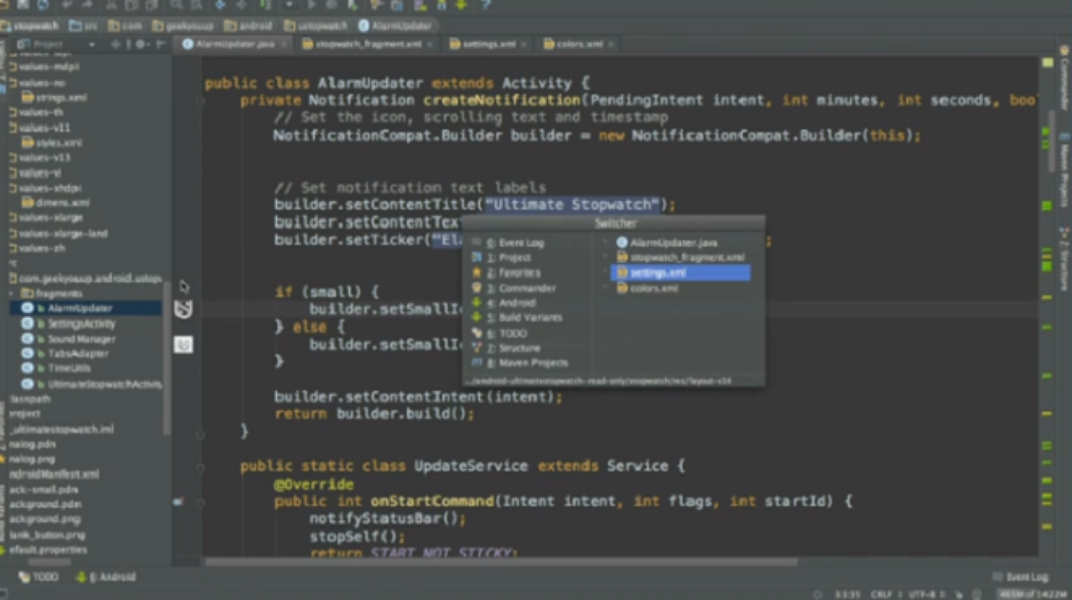
We’ve used a nullable type Bundle? to prevent NullPointerExceptions when not data exists. Intent, extras are equivalent to getIntent(), getExtras() in Java. Val myArray: ArrayList? = intent.getStringArrayList("myArray") Val string: String? = intent.getString("keyString") Retrieving Data in the new Activity val bundle: Bundle? = intent.extras To retrieve the data in the other activity, we need to use the extras property over the bundles. These Extras fields are under the hood wrapped into the Bundle object which ultimately holds all the data to be passed. Intent.putExtra("keyString", "Androidly String data") val intent = Intent(this, OtherActivity::class.java) putExtra generally passes the basic types such as Int, Float, Char, Double, Boolean, String along with IntArray… etc. To pass data onto the new activities we use key value pairs inside the function putExtra, putStringArrayListExtra etc. This flag would clear all the activities above the activity that’s called and set it on the top of the stack. Similarly using a flag FLAT_ACTIVITY_CLEAR_TOP would not launch another instance of the activity if it already exists. intent.flags = Intent.FLAG_ACTIVITY_SINGLE_TOP If you start the same activity everytime, a new instance would be created and added onto the activity stack To prevent this, you can use the flags: FLAG_ACTIVITY_SINGLE_TOP - If set, the activity will not be launched if it is already running at the top of the activity stack. Intent Flagsįlags are like options that can be set on intents to customise the launch process. finish() is used to destroy an activity and remove it from the stack. How does our Application, realise which activity is the first to be invoked? In the AndroidManifest.xml we set the intent filter with the action and category on the first activity to be launched when our application opens. StartActivity would add OtherActivity on the activity stack and launch it. In Kotlin, following is the way to create an activity. This falls under the implicit intent category. It’ll display all the available applications of those types. An action such as URL, phone number, location.

This type of Intent is an explicit intent.

We set the component name which can be: The fully qualified class name of the activity to be called. An intent definition mainly consists of an instance of the current activity. In this tutorial, we’ll be looking mainly at intents to handle activities.


 0 kommentar(er)
0 kommentar(er)
